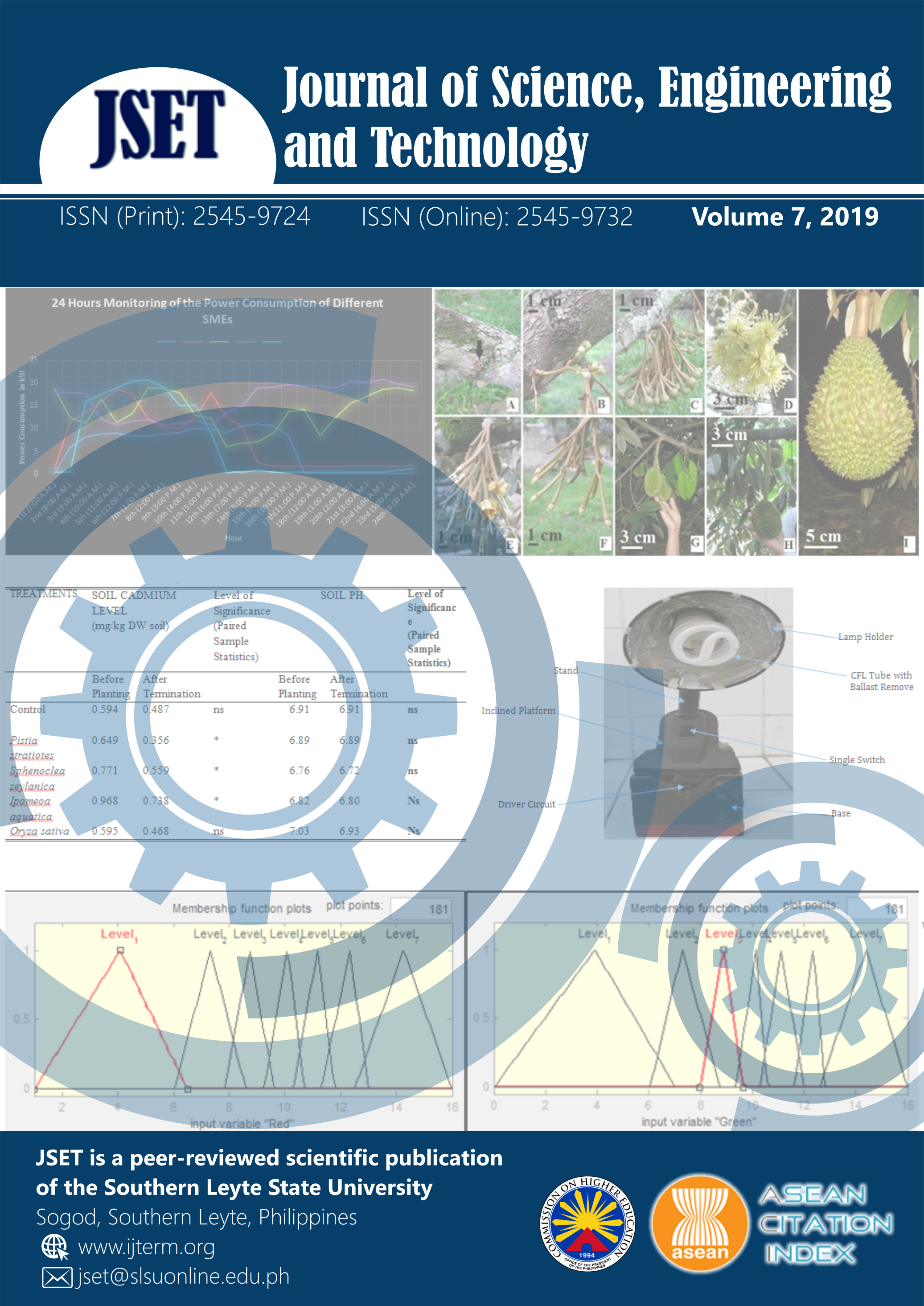Localization and Quantification of Tannin in ‘Tawa-Tawa’ (Euphorbia hirta L.) Callus Exposed to Different Levels of CuSO45H2O and KNO3
DOI:
https://doi.org/10.61569/qtddz820Keywords:
Condensed tannin, Euphorbia hirta, Hydrolysable tannin, Nutrient levels, Somatic embryosAbstract
Plants produced secondary metabolites for growth, defense and protection. Understanding the factors that influence the biosynthesis of these active compounds is essential for its efficient production. In this study, localization of tannin in ‘tawa-tawa’ callus and influence of different levels of nutrient on the tannin production and antioxidant activity of ‘tawa-tawa’ crude extracts were investigated. Effect on tannin production of ‘tawa-tawa’ calli derived from nodal and internode explants and their response to increasing concentrations of CuSO45H2O (0, 0.1, 1, 10M) or reducing levels of KNO3 (193 mM, 145 mM, 96mMand 0 mM) were explored. ‘Tawa-tawa’ callus contains a 1:6-14 ratio between condensed tannin and hydrolysable tannin. Amount of condensed tannin in calli derived from nodal explant was 94% higher compared to internode derived calli. However, the amount of both tannins in ‘tawa-tawa’ calli regardless of explant source did not significantly differ when exposed to various levels of nutrients in the culture medium. The antioxidant activity of ‘tawa-tawa’ callus crude extracts was also not affected by the levels of CuSO45H2O and KNO3. Its 1,1-diphenyl-2-picrylhydrazyl (DPPH) radical scavenging activity ranges from 59 to 85%. It is concluded that concentration of hydrolysable and condensed tannins is influenced by the type of explant material, but not by the levels of CuSO45H2O and KNO3. Various levels of CuSO45H2O and KNO3 had no effect on the antioxidant activity of the crude extract of ‘tawa-tawa’ calli. Histological localization of tannin using 1% MeOH FeCl3 stain in ‘tawa-tawa’ callus cross sections suggests the involvement of tannin in re-programming of cells for growth and differentiation as well as for structural support.
Downloads
Published
Issue
Section
License

This work is licensed under a Creative Commons Attribution 4.0 International License.
This is an open access article distributed in accordance with the Creative Commons Attribution 4.0 Unported (CC BY 4.0) license, which permits others to copy, redistribute, remix, transform and build upon this work for any purpose, provided the original work is properly cited, a link to the license is given, and indication of whether changes were made. See: Creative Commons Attributions 4.0 International License.








